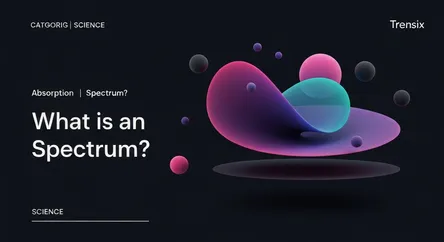Science
What is an Absorption Spectrum?

An explanation of absorption spectra and how these unique "fingerprints" of elements are used to analyze materials from distant stars to our own planet.
What is it?
An absorption spectrum is the unique pattern of dark lines or bands that appears when light passes through a substance. As a continuous spectrum of light (like white light) travels through a material, atoms and molecules within that substance absorb specific wavelengths of light. These absorbed wavelengths correspond to the exact amount of energy needed to excite their electrons to higher energy levels. The resulting spectrum shows gaps or dark lines at the positions of the absorbed wavelengths. Each element and compound has a unique absorption spectrum, which acts like a "fingerprint," allowing scientists to identify its presence in a sample.
Why is it trending?
The study of absorption spectra is fundamental to many advancing fields of science. In astrophysics, it is crucial for determining the chemical composition, temperature, and density of distant stars, galaxies, and the atmospheres of exoplanets. By analyzing the light from these celestial objects, astronomers can identify the elements present in them. In environmental science, absorption spectroscopy is a vital tool for monitoring pollutants in the air, water, and soil by detecting harmful substances like heavy metals or toxic gases. Furthermore, ongoing advancements in material science and nanotechnology rely on analyzing absorption spectra to develop new materials with specific optical and electronic properties for devices like solar cells and sensors.
How does it affect people?
Absorption spectra have numerous practical applications that impact daily life. In medicine, techniques like pulse oximetry use the principles of light absorption to non-invasively measure oxygen levels in the blood. In environmental monitoring, it ensures the safety of our air and water by identifying pollutants. The food industry uses absorption spectroscopy to check for contaminants and verify nutritional content, ensuring food safety. Additionally, this principle is used in agriculture to optimize lighting conditions for plant growth by understanding which wavelengths of light are most important for photosynthesis, potentially increasing crop yields.